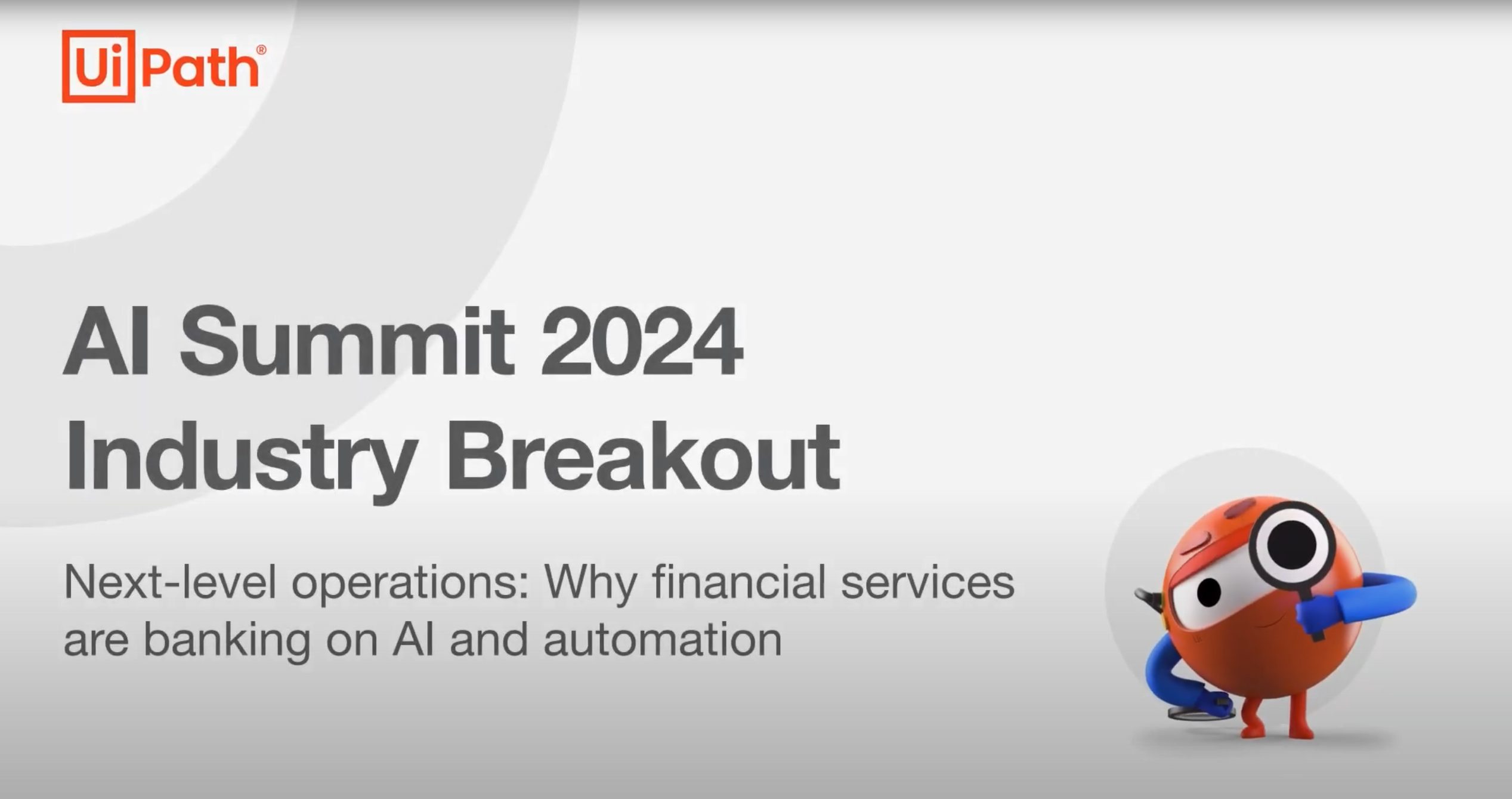OMERS' strategic approach to AI offers roadmap for financial leaders

In the rapidly evolving landscape of financial services, the integration of AI and automation is no longer just about cutting costs—it's about driving innovation, enhancing employee capabilities, and supporting strategic growth. This was the central theme that emerged from the UiPath AI Summit 2024’s financial services breakout session, featuring Vipin Jain, Director of the Automation Center of Excellence at OMERS, one of Canada's largest pension plans.
Automation with purpose: OMERS' strategic approach
OMERS, servicing around 600,000 members in Ontario with net assets of $128 billion, embarked on its automation journey in 2019 with a clear objective: to transform the way they work. "Our main objective is to give time back to our employees so that they can work on things that they love to do, and also focus on their learning and development," Jain explained.
This approach reflects a crucial shift in thinking about automation. Instead of focusing solely on efficiency metrics, OMERS prioritizes impact. Their guiding principles include:
Automating within core systems first
Improving processes before automating
Focusing on reducing operational risk and supporting growth plans
AI-powered use cases: from tax compliance to financial insights
Jain shared two compelling use cases that demonstrate the power of intelligent automation.
Streamlining tax compliance: OMERS automated the process of reading and comparing financial reports and T2 statements (Canadian corporate income tax returns) across different investment types and provincial rules. T12 Corporation Income Tax forms—mandatory documents that OMERS must create for each of the companies it invests in—are now handled by a UiPath Robot. The robot reviews the trial balance provided, uploads it to the tax preparation software, and reviews the output PDF to ensure all fields are filled correctly based on provincial regulations and compare that with the last year to do the compliance checks and present that back to the user to make the decision for the next steps. This not only saved time but also improved accuracy and enabled more meaningful conversations with accounting teams.
Enhancing month-end close: by automating 12 month-end and year-end processes, OMERS freed up capacity for their finance team to focus on analytical work.
What's striking about these use cases is that they go beyond mere efficiency gains. They're about enabling employees to do more value-added work, driving insights, and supporting the organization's growth objectives. Jain summed up the impact: "Now they can differentiate between 'I should not do this. This should be done by automation.' And when automation is done, they look at the report, [and] they look at how we can drive more insights."
Cultural transformation: embedding an automation mindset
Perhaps the most significant impact of OMERS' automation program has been the cultural shift it has sparked. "Our objective was always, we can't add more hours in the day, but we can give you time back to do more work of meaning and value," Jain emphasized.
To foster this automation mindset, OMERS launched several initiatives:
School of automation: teaching employees how to be business analysts and citizen developers
Build-a-bot sessions: demonstrating how easy it is to build automations. These sessions—designed to show people the art of the possible with automation and how automation can be an ally in their working lives—have been instrumental in discovering and helping OMERS develop new, highly specific use cases.
Women in tech program: showing how to start automating without coding skills
The result? Over 90% of automation ideas now come from analysts and senior analysts, demonstrating a bottom-up approach to innovation.
The future: AI-powered automation
Looking ahead, OMERS sees automation as a key strategic capability. They're exploring ways to embed AI with automation, leveraging tools like UiPath Autopilot™ to accelerate CoE development and implementation.
Jain highlighted the unique position of the UiPath Business Automation Platform™ that combines automation and AI capabilities: "In a market that is saturated with AI...with UiPath we can drive directly to the business requirements, business needs."
Key takeaways for financial services leaders
Look beyond cost savings: frame automation and AI initiatives in terms of strategic growth, employee empowerment, and enhanced insights.
Start with process improvement: before automating, ensure your processes are optimized for maximum impact.
Foster an automation mindset: invest in training and tools that empower employees at all levels to identify and implement automation opportunities.
Embrace AI-powered automation: look for platforms that seamlessly integrate AI capabilities with end-to-end business process automation tools to drive more sophisticated solutions.
Measure success holistically: "Our primary metric is hours back to our business teams to enable our employees to focus on value added work," said Jain. "There are other metrics that are helping drive automation adoption for us, including reduction of manual errors, fostering learning and the growth of employees, enhancing employee well-being by improving work-life balance, supporting compliance programs, and contributing to the overall growth of the organization."
As financial services organizations navigate an increasingly complex and fast-paced environment, the strategic application of AI and automation will be a key differentiator. By focusing on impact rather than just efficiency, firms can unlock new levels of innovation, employee satisfaction, and sustainable growth.

Watch the full OMERS interview and all AI Summit sessions on demand now.

Product Marketing Manager, UiPath
Get articles from automation experts in your inbox
SubscribeGet articles from automation experts in your inbox
Sign up today and we'll email you the newest articles every week.
Thank you for subscribing!
Thank you for subscribing! Each week, we'll send the best automation blog posts straight to your inbox.



